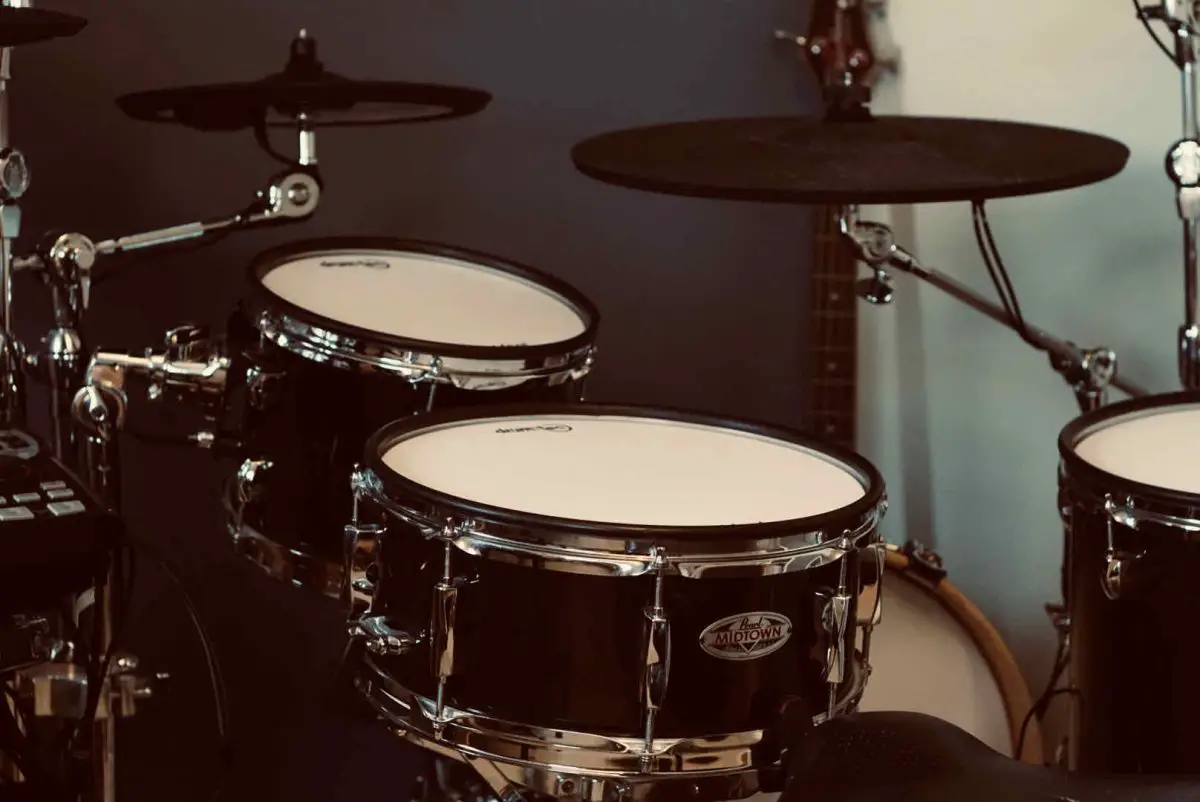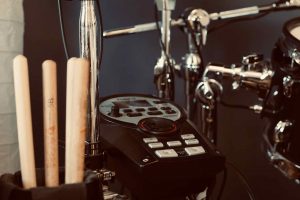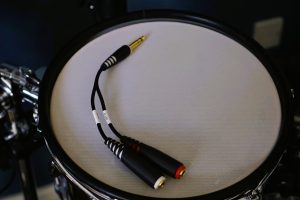Whether you’re new to electronic drums or drums in general, you might wonder how electronic drums feel to play compared to acoustic drums. Here’s my take on this question, having played and owned acoustic drums since 2004 and electronic drums since 2008.
Do electronic drums feel like acoustic?
The short answer is no, not quite. Electronic drums tend to use either rubber or mesh drum heads, which feel different to standard drum heads. Mesh drum heads feel more bouncy than regular mylar drum heads found on acoustic kits. Rubber heads tend to be the opposite with much less rebound than acoustic drum heads. Meanwhile, electronic drums usually make use of rubber cymbal pads, which feel very different to bronze acoustic cymbals with much less rebound.
What else makes electronic drums feel different to acoustic?
It’s not just the drum heads and cymbals that differ when comparing electronic drums (or eDrums) to acoustic. Some other factors include drum diameter, types of cymbal pads, and even how the sounds are generated.
Drum diameter
Electronic drums come in various shapes and sizes, and many tend to be smaller than acoustic drums. A typical acoustic snare drum is 14 inches across, while many lower-end or even mid-ranged electronic snare drum pads are around 8 to 12 inches across.
The diameter of the drum has an impact on the playing feel of an electronic drum compared to an acoustic drum. If you’re used to an acoustic snare drum, then you may need to adapt your technique slightly to play rim shots or cross stick on an electronic snare pad.
If you want an electronic drum kit that feels like an acoustic one, there are more and more eDrums out there that use realistic-sized pads. Continue reading to find out more!
Cymbal pads
As with electronic drums, electronic cymbal pads are often smaller than acoustic ones. A notable example is Roland’s VH-11 or VH-12 hi-hat pad. While these hi-hat pads are modelled on acoustic hi-hats, size is a key difference. Roland’s pads measure 12 inches across, while a typical acoustic hi-hat diameter is 14 inches.
Why does this matter? If you use a double pedal and set up your hi-hat stand as you would with a standard electronic kit, you may find that the hi-hat cymbal pad feels further away than it usually would with an acoustic drum kit. Yes, the solution is simple – just move the pedals closer together – but it is just one other subtle difference that makes the feel of electronic and acoustic drums slightly different.
Electronic drum sounds
It goes without saying that electronic drums are quieter than real acoustic drums. But one thing that beginners may not consider, is that the way electronic drums trigger their in-built sounds can have an impact on feel.
Firstly is the difference in pure volume. Regardless of whether you use a drum amplifier or headphones to hear yourself playing your eDrums, it doesn’t quite compare to the sound of a real kit filling a room with sound.
Being an acoustic instrument, a real drum is moving air (think about how big a bass drum is and how much air is moved within it when you strike the drum), and so an acoustic kit feels more present in a room – you can literally feel the sound!
Of course, if you’re looking for an electronic drum kit, there’s probably a good reason why a real kit isn’t exactly right for you, for example, if you’re an aspiring apartment drummer. But again, be aware that this is one difference between these two types of drums.
Secondly, a potential difference is the electronic drum brain and how it processes your sticking on the drum and cymbal pads. Sometimes, cheaper, older or otherwise less capable drum modules feel a little different to play. Here’s why.
Electronic drums take the input from the pads, interpret the strength or velocity of each hit, and translate this into a digital sound for every stroke of the drum.
For an acoustic drum, there’s almost an infinite number of different strengths that you could strike the drum, each one is translated 1:1 into a sound from that drum. It’s not just the volume that changes – when you hit the drum at a low volume, it sounds different to how it would if you hit it as hard as you can. And further to that, each time you hit the drum, your stick might land in a slightly different spot, which changes the sound yet again.
For electronic drums, that translation into a sound is not 1:1, due to the processing limitations of the drum module. There are only so many different variants of each type of stroke on a particular electronic drum sound. There might be only 8 or 16 variants of each drum sound, and so the drum module has to try to approximate these sounds, playing them at different volumes to match your playing as closely as possible.
Inevitably, this isn’t perfect and represents yet another difference in playing feel between acoustic and electronic drums. This can be noticeable on very old or cheap electronic drum kits. But fortunately, it is much less noticeable, or even indistinguishable on high-end eDrums or when using eDrum VST software to make your drums sound more real.
Electronic drums that feel like acoustic drums
So, what should you do if you want to find an electronic drum kit that feels like an acoustic kit? Fortunately, there have been numerous strides in the electronic drum market to make eDrums look and feel more like their acoustic counterparts.
Firstly, size. For many years there has been a cottage industry of manufacturers turning acoustic drum shells into electronic drums. That went mass-market with the launch of the ATV aDrums series, which feature drums that look like real acoustic shells, and much larger, realistic-sized cymbal pads, such as 14 hi-hats and 18 ride cymbals.
Fast forward to today, the ATV range has been joined by Roland’s VAD series and EF Note drums.
Smaller, niche eDrum makers are still an option, and several are offering other features that make their drums look and feel more like real drum kits. One notable factor is metal cymbals for electronic drums. Smaller eDrum builders like Jobekey and Diamond Drums are offering metal cymbals, based on low-volume cymbals (which feature hundreds of small holes to keep the sound levels down). While these cymbals don’t feel exactly like real cymbals, they get a little closer, and have more ‘realistic’ sizing, for example, 14 hi-hats and 18 or even 20-inch ride cymbals.
If you’re in the market for an electronic kit that’s as close as possible to an acoustic kit, check out our roundup of electronic drums that look like they’re acoustic.
Does it matter how electronic drums feel?
As mentioned before, there is probably a reason why you’re considering an electronic drum kit, which might be due to a need to compromise on volume. If that is the case, then your choice may well be to play an electronic drum kit, a so-called low volume kit (which often uses the same mesh drum heads as found on eDrums, in any case), or not playing drums at all.
So if that’s your situation, then an electronic drum kit could be a good solution to get your drumming fix and could be considered a way to complement access to an existing acoustic kit, whether in your home, at the studio, or with your local drum tutor, giving you the freedom to practice more. Importantly, you’re now more aware of the differences in feel between acoustic and electronic drums and can factor this in when looking for a kit that’s right for you.
If you’re looking for a new kit, why not read about how much you should spend on electronic drums in our guide!




